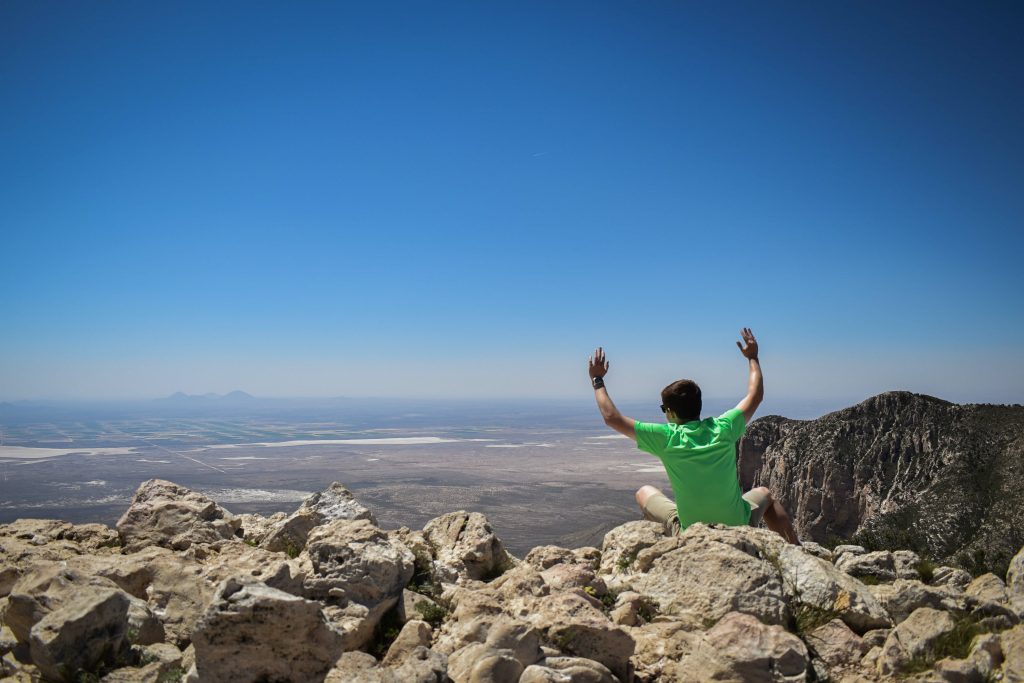Top Five Hiking Trails in Guadalupe Mountains National Park
Guadalupe Mountains National Park, a hidden gem in West Texas, is a haven for hiking enthusiasts. This park, known for its striking landscapes ranging from rugged mountains to lush canyons, offers a variety of trails that cater to all skill levels. Whether you’re seeking a challenging summit adventure, a peaceful nature walk, or something in-between, these trails provide an opportunity to explore the diverse and stunning scenery of the Chihuahuan Desert.
Let’s embark on a journey through the top five hiking trails in this magnificent park, each promising an unforgettable experience with its own unique features and breathtaking views.
Plus, be sure to check out these RV rentals near Guadalupe Mountains National Park for your trip!
Top Five Hiking Trails in Guadalupe Mountains National Park

1. Guadalupe Peak Trail
Location: Northeastern part of the park
Distance/Time: 8.4 miles round trip, approximately 6-8 hours
Skill Level: Strenuous
Intersections: Connects with El Capitan Trail
The trail to Guadalupe Peak is a challenging ascent, winding through high desert terrain and steep switchbacks. As you climb, the vegetation transitions from low-lying cacti and agaves to hardy pines and firs. The path offers spectacular views of the surrounding desert and mountain ridges.
Wildlife, including mule deer and golden eagles, may be spotted. The final ascent is steep and requires caution, especially during windy conditions. Upon reaching the summit, hikers are rewarded with a breathtaking panorama that extends for miles. This trail requires good physical condition, ample water, and weather awareness.
2. Devil’s Hall Trail
Location: Southern part of the park
Distance/Time: 4.2 miles round trip, 3-4 hours
Skill Level: Moderate
Intersections: Joins with the Guadalupe Peak Trail
Devil’s Hall Trail offers a moderately challenging hike through a picturesque canyon. The first part of the trail is relatively flat, traversing a rocky wash filled with interesting desert flora. As the trail progresses, it narrows, leading to the dramatic ‘Hiker’s Staircase,’ a series of natural stone steps.
Beyond this point, the canyon walls close in, forming the spectacular Devil’s Hall, a narrow passageway lined with towering limestone walls. Hikers should be cautious of slippery rocks and watch for flash flood warnings.
3. Smith Spring Trail
Location: Central part of the park
Distance/Time: 2.3 miles round trip, 1-2 hours
Skill Level: Easy to moderate
Intersections: None
Smith Spring Trail is a peaceful hike that showcases the park’s diverse ecosystems. The trail meanders through a mix of desert scrub and riparian woodland, leading to the refreshing Smith Spring.
Along the way, hikers can enjoy the sounds of birdlife and the sight of lush greenery, a stark contrast to the surrounding desert. The spring itself is a tranquil spot, ideal for relaxation and wildlife observation. The trail is well-maintained but can be rocky in places, and hikers should be mindful of the delicate plant life near the spring.
4. McKittrick Canyon Trail
Location: Northern part of the park
Distance/Time: Variable, up to 14.8 miles round trip, 4-8 hours
Skill Level: Easy to moderate
Intersections: Connects with Permian Reef Trail
McKittrick Canyon Trail is a serene hike that transforms with the seasons. In autumn, the canyon is ablaze with vibrant fall colors, a rare sight in the desert. The trail follows a meandering stream, with lush vegetation and towering cliffs. Wildlife sightings are common, including various bird species and occasional mule deer.
The path is mostly level, but rocky in parts, and offers several turnaround points for shorter hikes. For the full experience, the trail leads to McKittrick Ridge, where hikers are greeted with expansive views of the surrounding wilderness. Hikers should be prepared with water and check the gate times, as the park closes at dusk.
5. The Bowl Trail
Location: Western part of the park
Distance/Time: 9.1 miles round trip, 5-7 hours
Skill Level: Strenuous
Intersections: Links with Bear Canyon Trail and Frijole Trail
The Bowl Trail is a high-elevation hike that takes adventurers through a variety of landscapes. Starting with a steep climb through a rocky canyon, the trail gradually ascends to a forested area, unusual in the desert environment. This higher altitude supports diverse flora, including Douglas firs and maples.
The trail offers stunning views of the surrounding peaks and valleys. Wildlife such as Mexican Spotted Owls and black bears may be observed. This strenuous hike requires good physical fitness, proper hiking gear, and awareness of weather conditions, as the high elevation can bring sudden changes.
Conclusion
Guadalupe Mountains National Park is a treasure trove of natural beauty, with trails that cater to every hiking enthusiast. From the challenging heights of Guadalupe Peak to the serene waters of Smith Spring, each trail offers a unique glimpse into the diverse landscapes of this magnificent park. Remember to prepare adequately, respect the natural environment, and enjoy the journey on these top five hiking trails.